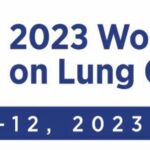Editor’s note:
At the 2023 European Society of Medical Oncology (ESMO 2023), Dr. Andrea Nccchi reported a phase 2b clinical study at the mini oral presentation, using a new intravesical local chemotherapy delivery system. TAR200 is expected to become a treatment method for patients with high-risk non-muscle invasive bladder (HR MIBC) to reduce disease recurrence. In addition, ESMO 2023 also reported TAR201 and EV-302 study. Dr. Andrea Nccchi shared his views on these latest studies in an interview with " Oncology Frontier ".
San Raffaele Hospital and Scientific Institute
- Oncology Frontier: Could you introduce what kind of new delivery system TAR-200 is?
- Dr. Andrea Nccchi: TAR200 is a new intravestical delivery system that allows a stable release of gemcitabine through a silicon tube that is, that osmotically released the gemcitabine into the bladder.It‘s a small silicon tube that is put into the bladder via a cystoscopy, so a very easy endoscopy procedure, and is removed every three weeks, recharged and then replaced into the bladder. So this way we can allow a continuous exposure of the tumor to the drug, and this is the key of success, so the total exposure time for the tumor to the drug seems to be, to make the key and the differences compared to other ways of installation of chemotherapy or other drugs in this disease.
2. Oncology Frontier: Could you please share the SunRISe-1 study you presnented at this congress? What is the clinical significance of this study?
- Dr. Andrea Nccchi: Well, the SunRISe-1 is a part of a platform study testing TAR -200 as monotherapy or in combination with the immune checkpoint inhibitors or Cetrelimab(anti PD -1 agent) in various disease stages. The SunRISe-1 in particular is a randomized phase 2b open -label study in which patients are randomized to receive a TAR -200 in combination with the Cetrelimab in cohort-1, TAR -200 in monotherapy in cohort-2, or Cetrelimab in monotherapy in cohort-3. There is an additional cohort of patients that is included in this currently enrolling patients that is cohort-4. It is included in patients with the papillary, high -risk, non -muscle invasive disease. Importantly, cohort -1, 2, and 3 are included in patients with the crinoma in situ disease, to component with or without a papillary disease who have already experienced a BCG failure and who has already received a sufficient number of BCG intravascular in order to define them as having a BCG unresponsive disease. The standard of care for experimental radical cystectomy and these patients are refusing or unfit for radical cystectomy.The reported data pertains to the monotherapy cohort, specifically Cohort 2, where TAR-200 is administered every three weeks for the initial 24 weeks and subsequently every 12 weeks until week 96. The primary endpoint is the complete response rate, rigorously assessed centrally through urine cytology and biopsies at weeks 24 and 48. It’s essential to note the stringent definition of this endpoint.
3. Oncology Frontier: For LBA 104 presented at the same session, TAR-210 was used for NMIBC with FGFR alteration. Does your research also include analysis of biomarkers such as PD-L1?
- Dr. Andrea Nccchi: So the TAR210 is a similar way, pursues a similar way of delivery in therapy, and basically in this case, we don’t have chemotherapy, but we have a first targeted therapy that is delivered locally. TAR210 was a study which investigated the delivery of treatment in patients with intermediate risk, non -muscle invasive blood cancer. The primary point was their recurrence-free survival, and the initial data, but very short term, follow up quite promising, more than 80% relapse free survival in this patient population, so quite promising. These patients were selected according to FGF receptor molecular alteration. So basically, we don’t have at least at the moment information on the PDL1 expression of these patients. Of course, it’s something that is being, is it the pipeline of the analysis of the study, but we still do not have, and presumably, the PDL1 expression should be low in this patient population.
4. Oncology Frontier: At this congress, you also conducted the speech on the progression of NMIBC to MIBC. What implications does this progress have for our clinical treatment?
- Dr. Andrea Nccchi: Yeah, the point of disease progression in this patient population is still alive, and this is the reason why there is a huge investment, and there is a large number of clinical trials that are investing in the searching for new drugs systemically or intravestically in this patient population, population across the border of high risk, non -muscle invasive disease, and early muscle invasive disease. So this is a potentially deadly disease, so there is a lot of research ongoing, testing newer combinations, in particular testing the combination that provided a new standard of care in front line metastatic setting like ADC and immunotherapy combination. But there are also combination of therapies like TAR200, so intravascular therapy and systemic therapy or combination of immunotherapies. So the point here is to try to cure the patients and to avoid the progression of the disease without going towards radical cystectomy. So sparing the bladder to these patients and achieving the goal of a cure.
3. Oncology Frontier: During the whole congress, there are many new researches and new discoveries on the urothelial cancer, which one impressed you the most?
- Dr. Andrea Nccchi: Well, of course, as oncologists, we are all impressed by the data of EV -302 study. So, in enfortumab vedotin and Pembrolizumab, in front line, metastatic setting that changed the way and potentially will change the way we conceive the treatment of patients with a metastatic bladder cancer. There has been also that interesting with the combination of immune therapy avelumab and cisplatin based chemotherapy in front line. (JAVELIN Bladder 100) Also achieving the primary point with the magnitude of improvement in survival that was lower than that achieved with the EV -Pembro (EV -302). But there is still an opportunity I guess for this combination at least for selected patients. Mainly we will work for the next meeting on the patient selection and on biomarkers that may allow us to identify the patients who are best suited for certain therapeutic strategies. So patient selection and therapy selection is the key in the near future.


